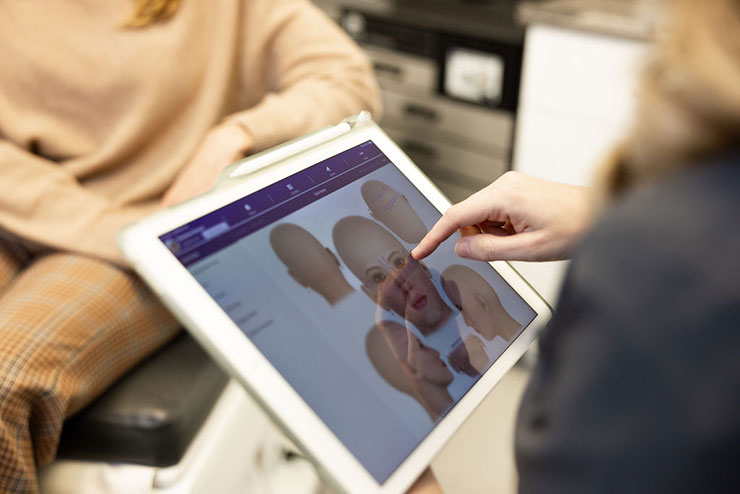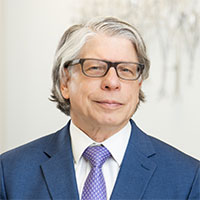

Liposuction is a procedure that uses specially designed cannulas and a medical vacuum apparatus to remove fat deposits throughout the body. This procedure, suction-assisted fat removal or “liposuction”, was first developed in France. After European patients received favorable results, leading cosmetic surgeons in the United States adopted the procedure and began to offer it to their patients.


Liposuction has proven to be an excellent partner to improve the results of cosmetic surgery procedures. Dr. Fedok has used liposuction as an adjunct procedure in the face, neck, and other areas of the body. He has also used it to harvest the patient’s own fat for fat transfer procedures. In some cases, an advanced technology incorporating laser (Beautifill) is used to enhance skin tightening and fat removal.


Liposuction may be the sole treatment used for patients who are younger than the usual facelift patient. These candidates have skin that has enough elasticity to reshape and re-contour the neckline after the procedure. Your consultation is the time to discuss whether or not you are a candidate for suction-assisted lipectomy. Not every patient has the type of fat deposits suited to liposuction.

Liposuction for the face and neck area can dramatically transform your facial profile. Benefits of Dr. Fedok’s liposuction treatment include:


The aging of the neck is a common concern for patients seeking facial or neck rejuvenation procedures such as submentoplasty. Several factors contribute to the appearance of an aging neck, including a less defined jawline, excess neck fat, thinning and lax skin, platysma muscle bands, and more.
One noticeable effect of aging is the development of a fat pocket beneath the chin, leading to the formation of a double chin. This condition can affect individuals of various ages, including those in their twenties and forties. For younger patients with good skin elasticity, simple or laser-assisted liposuction may suffice to achieve excellent results. However, older patients may experience less fat accumulation and more issues related to skin and muscle laxity, resulting in a “turkey gobbler” deformity.
To address these concerns, various procedures may be recommended based on the patient’s specific diagnosis during consultation with Dr. Fedok. Patients primarily dealing with excess submental fat may undergo fat removal via direct excision or liposuction. For those with a “weak” chin contributing to undesirable neck contours, chin augmentation may be advised. In cases involving significant skin or muscle laxity, different procedures may be recommended.
One commonly recommended procedure is submentoplasty, which involves a small incision just below and behind the chin. Through this incision, excess fat and skin are removed, and the neck skin is tightened. Vertical muscle bands are also modified or excised as needed. Submentoplasty can be performed alone or combined with a standard facelift or neck lift, as it may not address sagging jowls. Facelift surgery may be required to correct sagging skin that extends from the face onto the neck.
In some cases, submentoplasty may be performed as a secondary “tuck-up” procedure, typically six months to a year after facelift surgery. It can serve as a touch-up to enhance the long-term results of the facelift.
Patients who undergo liposuction should be aware that it takes between six weeks and six months to achieve the desired results. This is due to the inherent nature of the procedure which is simply breaking up the fat deposits and fat cells with a blunt instrument, a cannula, and sucking out the loose fat. Because of the swelling and reduction in the number of fat cells, the results take time to become evident. A supportive bandage will be worn under the chin for one to two weeks. This bandage will also hide the small incision under the chin and below the earlobes. There is minimal discomfort with this procedure.


Dr. Fedok ensures that his patients are well-informed about the possible risks and side effects of face and neck liposuction. These include bruising, swelling, and numbness, but these symptoms typically subside within a few weeks following the procedure. Another potential side effect of liposuction is skin or contour irregularities. However, Dr. Fedok uses advanced liposuction techniques to minimize the risk of these liposuction risks and side effects.
We use advanced techniques and technology to ensure a safe and effective liposuction procedure. Dr. Fedok’s personalized approach to each patient’s unique needs and goals delivers results that exceed expectations. Schedule a consultation if you are in the Daphne, Fairhope, Gulf Shores, and Alabama areas and ready to experience the benefits of face and neck liposuction.

By Dr. Fedok, a well-respected and widely published double board-certified plastic surgeon whose before and after gallery, RealSelf and Google Reviews reflect his trusted expertise.

The cost of face and neck liposuction can vary depending on several factors, including the extent of the procedure, the surgeon’s experience, the geographic location of the practice, and whether it is performed as a standalone procedure or in combination with other treatments. It is best to consult with Dr. Fedok to discuss your specific needs and receive an accurate cost estimate tailored to your needs.
Yes, facial liposuction permanently removes unwanted fat deposits in the face and neck area. It is, however, essential to maintain a healthy lifestyle and body weight to ensure long-term results and prevent the development of new fat deposits in the treated areas.
Yes, there are non-surgical alternatives available. The effectiveness of non-surgical treatments may vary, and they might require multiple sessions to achieve desired results.
While liposuction can improve the definition of the jawline and neck by reducing fat deposits, it may not be suitable for addressing significant issues of loose or sagging skin. Patients with loose neck skin may benefit from neck lift surgery, which can address excess skin and fat.
A liquid or soft diet is recommended immediately after the procedure. As your recovery progresses, you can gradually transition to a regular diet. Staying hydrated and consuming nutrient-rich foods will aid in the healing process. Always adhere to the dietary guidelines provided by Dr. Fedok to ensure a smooth recovery.